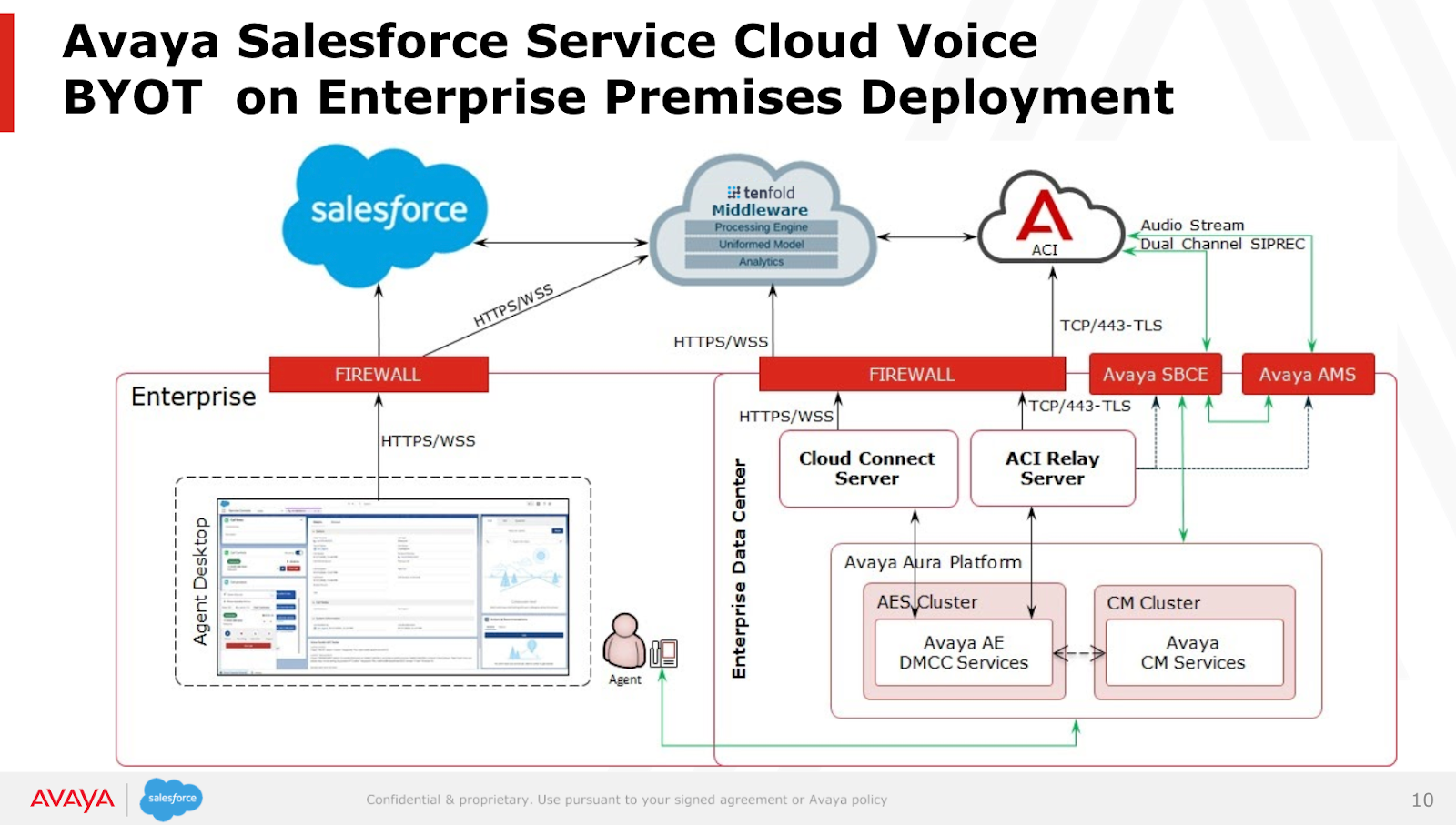Solution architecture
The following image shows the high-level architecture between AvayaTenfoldTenfold is represented by the Tenfold Middleware and Cloud Connect Server. For the purposes of this guide, Cloud Connect Server represents TCC.

Data memorialization
The following table describes the mapping of Tenfold and Avaya data stored on the VoiceCall object in Salesforce.
| Source of values from Tenfold and Avaya | Salesforce object | Salesforce field |
Outbound Calls: Agent Extension
Inbound Calls: Phone Number
| VoiceCall | from |
Outbound Calls: Phone Number
Inbound Calls: Agent Extension
| VoiceCall | to |
Inbound, Outbound, or Transfer | VoiceCall | initiationMethod |
The following object is passed where ${Phone_Number} represents the phone number and ${Agent_Extension} represents the agents extension
{ "participantKey": "${Phone_Number}",<br>
"type": "END_USER",},<br>
{ "participantKey": "${Agent_Extension}",<br>
"type": "HUMAN_AGENT",}
| VoiceCall | participants[] |
| The timestamp of the ringing event in Tenfold | VoiceCall | startTime |
| The timestamp of the connected event in Tenfold | VoiceCall | acceptTime |
| The timestamp of the hangup event in Tenfold | VoiceCall | endTime |
| Tenfold Call ID | VoiceCall | vendorKey |
| The configured call center name | VoiceCall | callCenterApiName |
| Mappings configured in the Data Memorialization feature | VoiceCall | callAttributes |